It is strange to think there was a time when the name of Mark Dvoretsky was not so well known in the world of chess.
Secrets
The man dubbed ‘the best trainer in the world’ started to attract serious attention – certainly in the United Kingdom – when Batsford published Secrets of Chess Training in 1991. This remarkable book was a real eye-opener, opening the door to a strange new world of serious chess preparation.
I remember seeing the book for the first time and being genuinely astounded at the depth of the material and the quality of the writing. A lot of it was clearly too deep for me at the time, yet I studiously played through all the moves and analysis. Some of it stuck the first time around but I had to return to the book many times to absorb more of the lessons. It really did feel like chess secrets were being revealed.
Six more volumes followed in the original Batsford series. I remember the second volume, Secrets of Chess Tactics (Batsford, 1992), being a particular highlight of the excellent series. His special relationship with Artur Yusupov led to some of the books being co-authored.
So many chess books now have the word ‘secrets’ in the title that the impact has been somewhat diluted. Yet there should be no doubt at all that Dvoretsky was indeed sharing his highly successful training methods with the wider world.
Of course, the world has moved on in many ways since the 1990s and this has dated some of the material. In particular, the material on adjournments has been rendered almost superfluous because nobody would dare to adjourn games any more (oh, such fond memories of the human brain being better for chess analysis than any computer!), but the analysis can still be enjoyed.
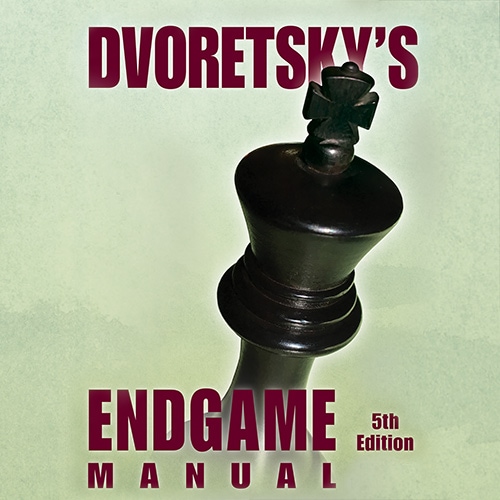
Picking up the Dvoretsky Baton
Edition Olms published picked up the Dvoretsky baton in the 2000s (some of the books were revised editions of the Batsford books) and then Russell Enterprises followed suit.
Indeed, it was with Russell Enterprises that the output broadened. Dvoretsky’s Endgame Manual, first published in 2003, remains a classic (and is available as a Chessable course) and the autobiographical For Friends and Colleagues volumes 1 and 2 (Russell Enterprises; 2014 and 2015 respectively) took his writing in a new direction. Indeed, his status had risen so much that limited hardback editions of both volumes were initially available, signed by the author – but only 500 of each volume were available.
They are not conventional autobiographies by any means but they do offer a wealth of excellent chess augmented by a large amount of anecdotes featuring numerous legendary players.
Tal fans will certainly not be disappointed but there are intriguing snippets all the way through the books.
Inside the Kortchnoi Camp
Mark Dvoretsky spent a little time with Kortchnoi when the latter was preparing for Karpov. Dvoretsky was an expert on the Petroff Defence and even though ‘Kortchnoi only once asked about it, casually enquiring about the evaluation of a critical position, and we never revisited this topic.’ In the match, Kortchnoi played the Petroff only once (in game six) and lost. ‘Karpov was prepared excellently’ said Dvoretsky. The point is that Karpov had found about Dvoretsky’s addition to the Kortchnoi camp and had made absolutely sure the Petroff was part of his own preparation, even though Kortchnoi had only ever played it once before (a very short draw with Stein in 1966).
The preparation didn’t always involve a chess board.
‘One morning, I saw Kortchnoi and Zagainov in the lobby of the holiday house, not far from the entrance. They were wearing tracksuits. We greeted each other.
Kortchnoi said, ”We are going for a run, but I am not inviting you, as you will not survive our routine.”
Of course, he was right, but still, I could not help but think it was quite funny to hear a 43-year-old grandmaster saying these words to a 26-year-old lad.’
Strong International Master
Dvoretsky was undoubtedly a very strong International Master. Turning his attention to training meant he was never going to earn the title of Grandmaster. However, he had wins against Smyslov and Bronstein to his name (both at Odessa, 1974). The game against Smyslov was particularly interesting. The opening was an Exchange Ruy Lopez.
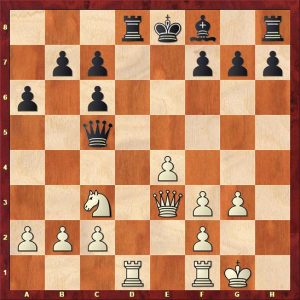
Dvoretsky – Smyslov
Odessa 1974
This was all part of Dvoretsky’s preparation but according to his own ChessBase notes after 14 …Qxe3 he had originally intended to simply recapture the queen and changed his mind, over-the-board, to do two other moves first.
15 Rxd8+ Kxd8 16 Rd1+
Smyslov now went wrong with 16 …Kc8? There was the option of 16 …Qd2 (not allowing White to change his kingside pawn structure or to keep his king on the kingside.
There followed 17 fxe3 g6 and Dvoretsky identified that move as a mistake, even going as far as to say the position was now hopeless. 17 …f6 improves Black’s prospects as it holds back the e-pawn.
18 e5 Bg7 19 f4 f6 20 exf6 Bxf6 21 e4 h5 22 Kg2 Bxc3 23 bxc3 b5 24 e5 a5 25 Kh3 b4 26 Kh4 Re8 27 Kg5 Re6 28 Kh6 1-0
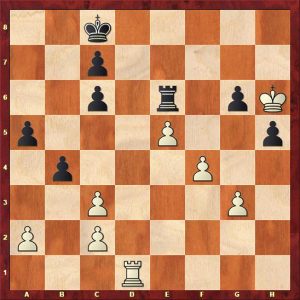
The king will end further resistance by marching to f7 via g7.
It is not often we see Smyslov, the endgame virtuoso, so easily outplayed in such fashion. Smyslov had been following an earlier game against Bednarski (Skopje Olympiad, 1972). Unfortunately he followed the same plan again but missed an important detail. The big difference is the presence of the second white e-pawn, which became a monstrous passed-pawn once the first e-pawn had been exchanged.
Fighting Chess
Mark Dvoretsky’s fighting draw with Keres is worth a look too.
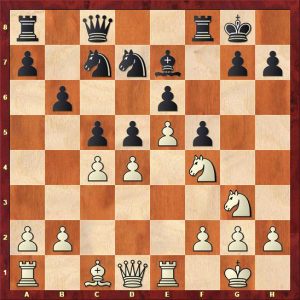
Keres – Dvoretsky
Moscow 1973
This looks like a typical case of Keres playing natural moves to develop a strong initiative. However, Dvoretsky senses the moment is right to play actively.
14 …g5!
Now Keres plays a logical sacrifice. Any other knight moves are tame.
15 Nxe6! Nxe6 16 cxd5 Nxd4 17 d6 Bd8 18 e6
This looks excellent for White but Dvoretsky has prepared a counter-sacrifice.
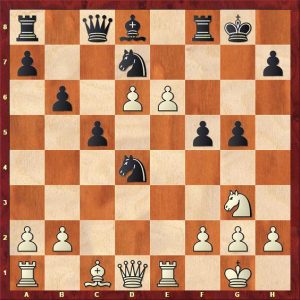
18 …Bf6! and they drew the game on move 30.
Mark Dvoretsky died at the relatively early age of 68 in 2016. His legacy is there for all to see and enjoy. He was a top trainer, excellent writer and fine player. His methods were very deep and instilled a strong work ethic in his students.
In my next post we will be looking at Dvoretsky’s Chess Lessons. It was first published by Russell Enterprises and is now available as a brand new edition from Chessable.








